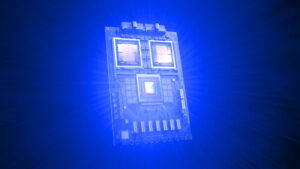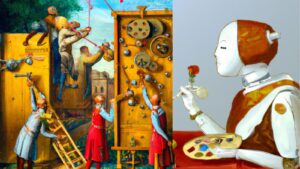 While researching an upcoming story on Nvidia, some facts came to light that made me realize we’re at the end of the Cloud Era.
While researching an upcoming story on Nvidia, some facts came to light that made me realize we’re at the end of the Cloud Era.
The Cloud Era began around 2010 and created enormous value around 5 companies. They used cash flow to build huge hyperscale data centers, filled with Intel CPUs. Google, Amazon, Microsoft, Facebook and Apple (in their latest incarnations) now dominate the Internet, both with their services and rental of space to enterprises.
We thought it would last forever.
It won’t.
Nvidia’s latest Blackwell chips will deliver 1.44 ExaFlops of performance. An ExaFlop is a quintillion, 1 followed by 18 zeros. That means a single server rack can do the work of an entire data center.
It means anyone can have a cloud. And if anyone can have a cloud, who needs the clouds?
But there’s a darker side to this story. A single Blackwell chip will draw 1,875 watts of power. That’s nearly twice what the current Hopper chips consume.
Cloud data centers were built with energy in mind. Google, Amazon, and the rest have spent billions of dollars, bringing in renewable energy and storage, and recycling the heat produced by their chips into things like water purification.
Now any damn Bitcoin miner can bring in a rack, suck up an area’s power supply, and print their own “money.” It also means there is now huge demand for any electricity a utility can deliver, even the dirtiest, smoggiest electricity.
What’s Behind It?

It used to be that a chip’s power was limited by the die it rested on. Every silicon wafer that goes through a Taiwan Semiconductor plant is cut into hundreds of small wafers, and a chip is built on each one. The Blackwells take up multiple dies. This also means the chip yield from a wafer goes way down, because two adjacent dies must be perfect before a chip made on them can ship.
CEO Jensen Huang claims to be unconcerned. He has coined what he calls “Huang’s Law” as a successor to Moore’s Law, believing that his system can double silicon performance faster than you can by making circuit lines thinner.
Maybe he can. But the cost, in terms of energy and economy, is enormous.
The Other Problem

There’s a second problem here.
As I’ve said before, AI companies are overpromising. There are signs the money understands this. The amount of cash sent to AI startups by VCs plunged in the first quarter, by 76%.
The result is that OpenAI is creating an enormous amount of Fear, Uncertainty, and Doubt (FUD) in the market. The purpose of FUD, however, is to freeze decision makers, make them hold off and wait for something better. That’s starting to happen. It’s why enterprise software stocks crashed recently. If AI is advancing so rapidly, customers believe they should just wait to see what’s possible, before putting money into what’s practical.
Conclusion

This was inevitable. The suitcase PC I bought in 1982 became a laptop within a decade. The laptop became a phone, and the phone is becoming a service.
We just believed that clouds would remain the center of this new world. But if any company can build a cloud from a server rack, why should they rent one? Why not just buy?
Nvidia passing Apple and (soon) Microsoft, becoming the world’s richest company, isn’t just a market event. It’s a key point in the history of technology. Leadership has shifted, and the world will never be the same.










